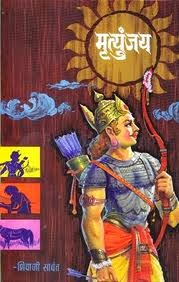The Audacity of Change
The 2014 General Elections have been unique in several ways. With the highest number of first time voters, campaigns that focussed on personalities, with elections being fought for the first time on the plank of an economic slowdown, there is little doubt that these general elections have been the most interesting and analysed general elections of recent times. In more ways than one, democracy has triumphed again, though this time with a new accent. In the massive victory of Narendra Modi in 2014, we see the triumphant emergence of a single party rule for the first time after 1984.
The past five years were marked with corruption, inflation, policy paralysis, bad governance and supreme arrogance which were seen as the hallmarks of the UPA-2 regime. In what was clearly a mandate for hope and change, the voice of India's democracy spoke again in a new accent. The BJP-led NDA became the first government to cross the majority mark of 272 seats in the Parliament since 1984. Thus, it brought back stable and empowered governance with a single party rule.
The early days of democracy in India represented the views of the liberal, educated elite marked by ideals like inclusiveness and pluralism. The 1990s brought us to a new trend in Indian politics: coalition politics which saw the rise of an under-represented class. So, 2014 brings in the decisive victory helmed by the man of the moment: Narendra Modi. His astounding rise and victory is a result of the triumphant emergence of a class that lay unnoticed craving for a change and development. The clear dilution of traditional electoral segments which generally rally around the lines of class and caste, the mass support that Narendra Modi got was from an aspirational section of society that is impatient to move on in life beyond the obvious narratives of secularism.
In the age of social media, the victory of Narendra Modi sees expectations rising in the form of a under-represented middle-class. While his appeal has clearly transcended traditional electoral segments that are generally arrayed along the lines of caste and class, his core support base comes from a class that has been described urban that defines everything and causes hope and dread of equal intensity. At this time, without question it is hope that dominates for that is the sentiment of the majority. Of course, the majority never sees itself as merely that, it always equates itself with the whole and accords to itself an air of engaging reasonableness.
For the first time in three decades, the country has a stable government marked with a decisive mandate that one could rarely envisage. Armed with a decent amount of self-belief, the mature Indian electorate usually has little interest in carping voices of dissent or of issues of those at the margin. Perhaps better days do lie ahead, as the Modi campaign promises, but whether that includes everyone is something that time will tell.
The past five years were marked with corruption, inflation, policy paralysis, bad governance and supreme arrogance which were seen as the hallmarks of the UPA-2 regime. In what was clearly a mandate for hope and change, the voice of India's democracy spoke again in a new accent. The BJP-led NDA became the first government to cross the majority mark of 272 seats in the Parliament since 1984. Thus, it brought back stable and empowered governance with a single party rule.
The early days of democracy in India represented the views of the liberal, educated elite marked by ideals like inclusiveness and pluralism. The 1990s brought us to a new trend in Indian politics: coalition politics which saw the rise of an under-represented class. So, 2014 brings in the decisive victory helmed by the man of the moment: Narendra Modi. His astounding rise and victory is a result of the triumphant emergence of a class that lay unnoticed craving for a change and development. The clear dilution of traditional electoral segments which generally rally around the lines of class and caste, the mass support that Narendra Modi got was from an aspirational section of society that is impatient to move on in life beyond the obvious narratives of secularism.
In the age of social media, the victory of Narendra Modi sees expectations rising in the form of a under-represented middle-class. While his appeal has clearly transcended traditional electoral segments that are generally arrayed along the lines of caste and class, his core support base comes from a class that has been described urban that defines everything and causes hope and dread of equal intensity. At this time, without question it is hope that dominates for that is the sentiment of the majority. Of course, the majority never sees itself as merely that, it always equates itself with the whole and accords to itself an air of engaging reasonableness.
For the first time in three decades, the country has a stable government marked with a decisive mandate that one could rarely envisage. Armed with a decent amount of self-belief, the mature Indian electorate usually has little interest in carping voices of dissent or of issues of those at the margin. Perhaps better days do lie ahead, as the Modi campaign promises, but whether that includes everyone is something that time will tell.


Comments